Video Library
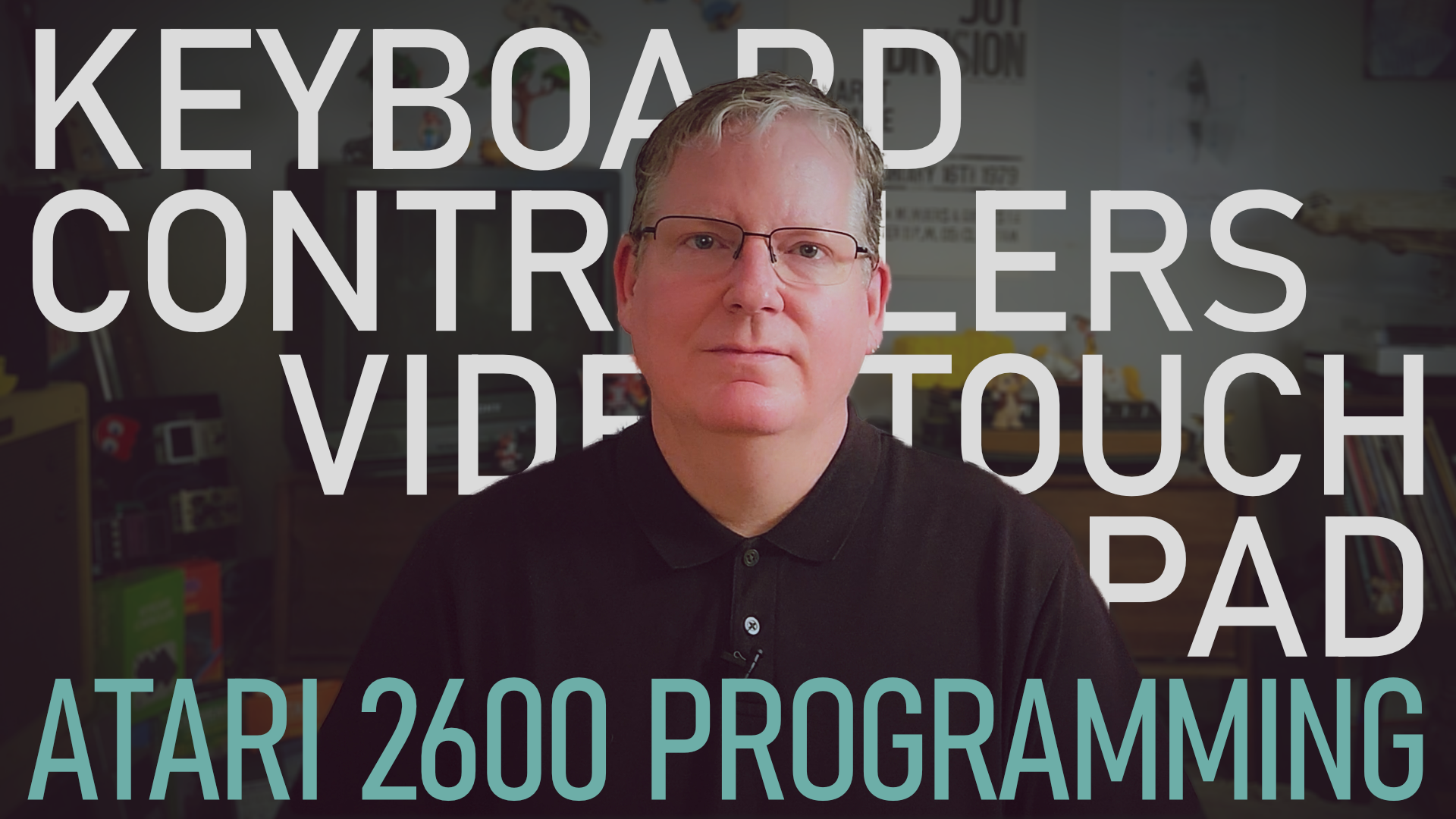
Programming the ATARI 2600 Keyboard Controllers & More
In this episode, we dive deep into one of the Atari 2600’s most intriguing peripherals, the CX-50 Keyboard Controller. We’ll explore its origins and place in Atari history, alongside its close relatives: the Video Touch Pad and the Kids Controller.
More...
There and Back Again: An Atari Odyssey
From childhood wonder with the Atari 2600 to a winding path through music and beyond, this is my journey.
More...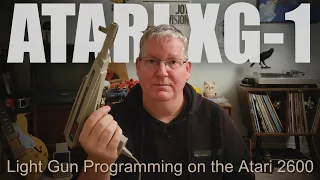
The ATARI XG-1 Light Gun
In this episode we learn about the history, mechanics, functionally and how to program the Atari XG-1 Light Gun to make our own shooting game
More...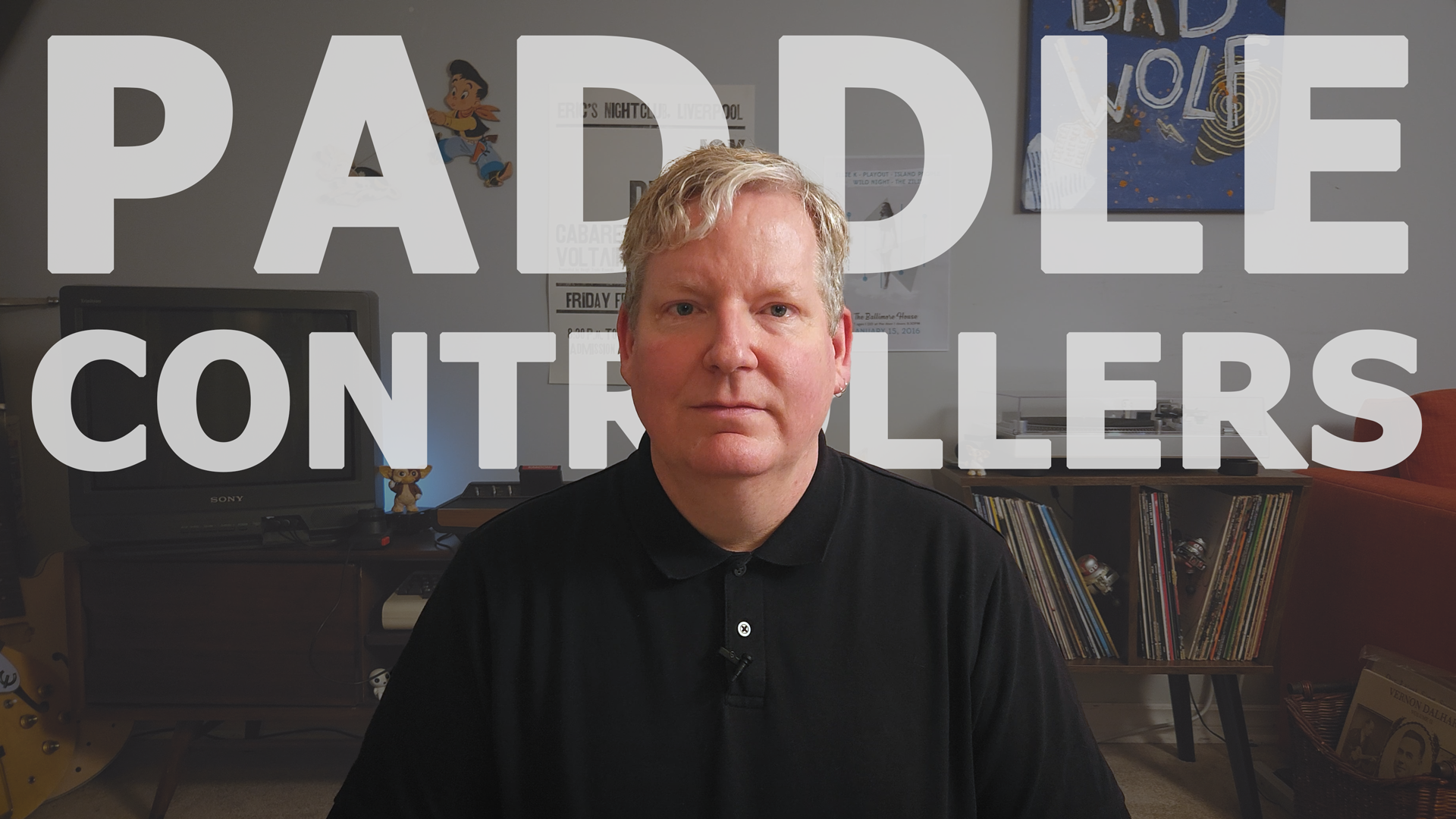
Programming Atari 2600 Paddles
In this episode, we unravel the mystery of the ATARI 2600 Paddle controllers - what they are, how they work, and most excitingly, how you can program them into your very own games!
More...
Programming Asymmetrical Playfields, Decimals & Scoreboards on the ATARI 2600
A deep dive into the precision timing required to create asymmetrical playfields, how to create scoreboards, and how to use binary coded decimals.
More...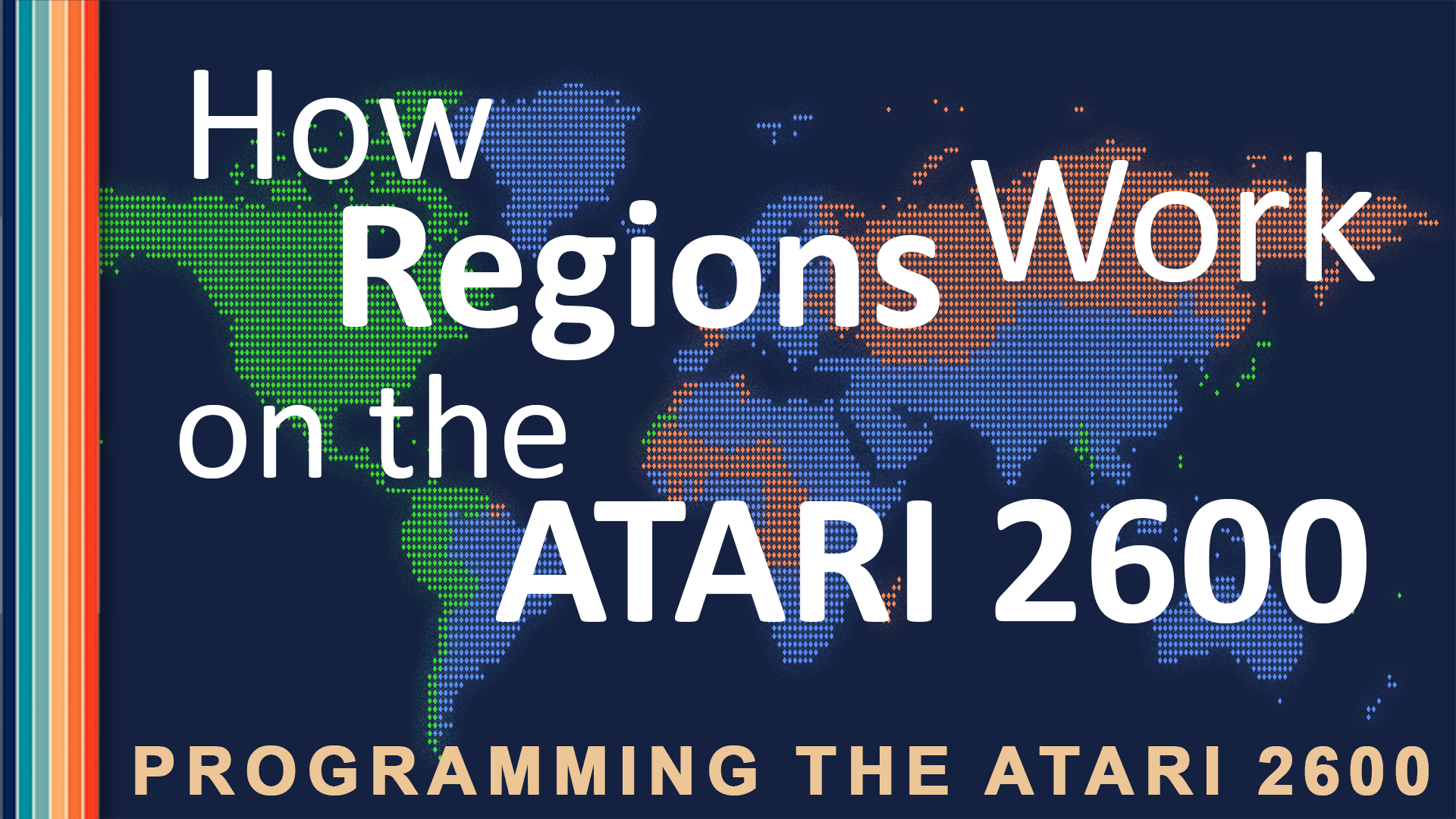
Programming for Different World Regions on the Atari 2600
In this episode we learn about the formation and technical challenges of the 3 world broadcast standards and how you can program your own ATARI 2600 games to target one or more.
More...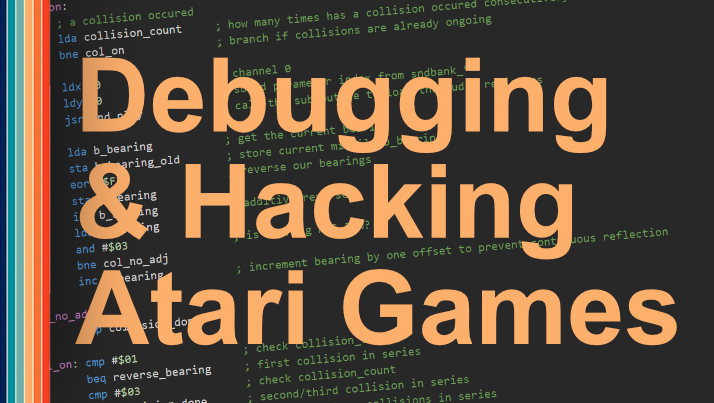
Debugging on the ATARI 2600 and Hacking Pitfall!
In this episode we demonstrate the debugging capability of the Stella emulator to trace yoru code and even hack other games.
More...
Adding SOUND to your ATARI 2600 game
In this episode we talk about how sound is generated on the Atari 2600 using the Control, Frequency and Volume registers, along with a couple of examples in 6502 assembly language!
More...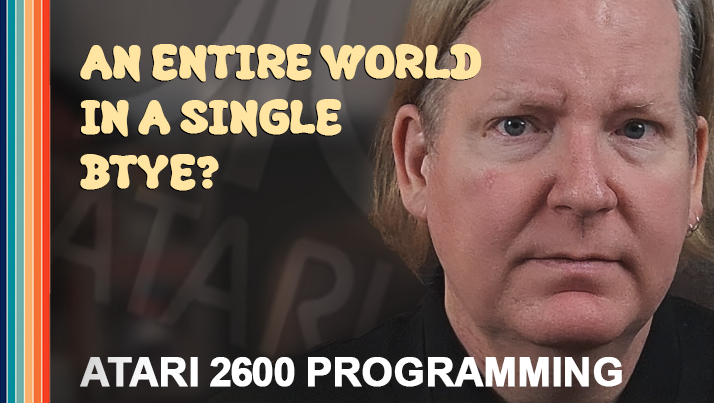
Random Numbers and the POWER of a Linear-feedback Shift Register
In this episode we talk about generating random numbers, and how they relate to linear-feedback shift registers that built the entire world of Pitfall in a single byte!
More...
ATARI 2600 Monthly Subscription Box
In this episode of Quick Blits we try out the Retro Game Treasure monthly subscripton box to see what it's like for ATARI 2600 games.
More...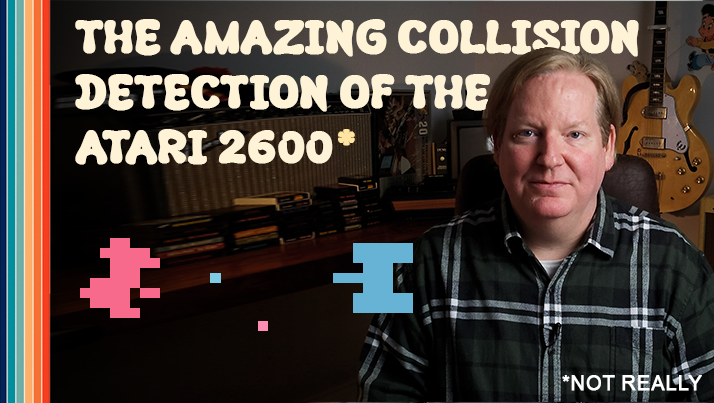
How the ATARI 2600 and COMBAT Handle Collision Detection
In this episode we talk about collision detection, how it works, and the 15 registers we can use. We also explore how the game Combat handles collisions and bouncing missiles, and have a look at some example code to create a ball that bounces around the playfield. As always, sample code for the episode is available in our github. Learn to program games for the Atari 2600!
More...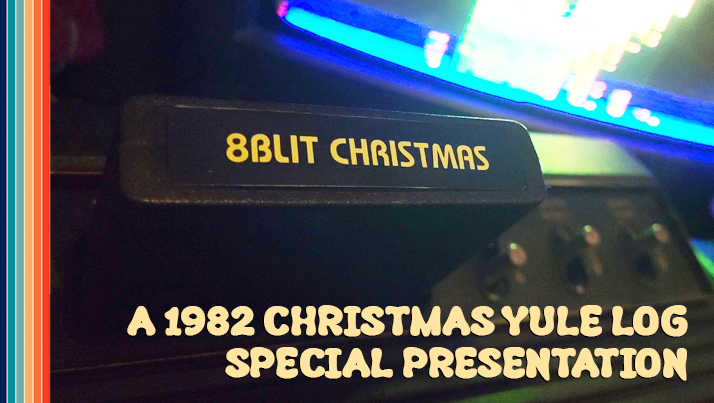
80's Retro 8Blit Christmas Atari 2600 Yule log Holiday Special
It's 1982, and baby it's cold outside. Warm up sitting by the fire and listening to a fine selection of seasonal music on the local AM radio station in 1982. Open your presents with cheer on Christmas morning while listening to classic seasonal songs with a charming host. Your 1982 8-bit Christmas is waiting for you.
More...
Too Many Kernels on the ATARI 2600?
In this episode we explore using kernels to draw our playfields, graphics, backgrounds, etc. We cover what types of kernels there are, multi-scanline kernels, and using multi-kernels in the same frame. We'll do a break down of the kernels used in the classic game Pitfall
More...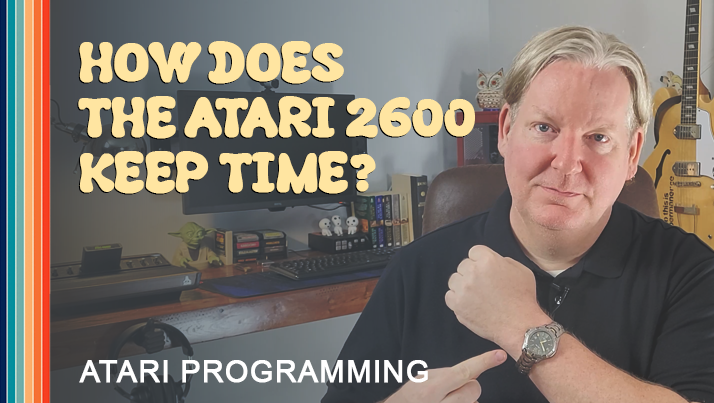
How does the ATARI 2600 keep time?
In this episode we explore how to use the various timers available for the Atari 2600, including the 1-clock (TIM1T), 8-clock (TIM8T), 64-clock (TIM64T), and 1024-clock (T1024T) timers, how to set the timing interval, reading the timer (INTIM) and how they can be used in the Vertical Blank, and Overscan area's of the CRT television screen.
More...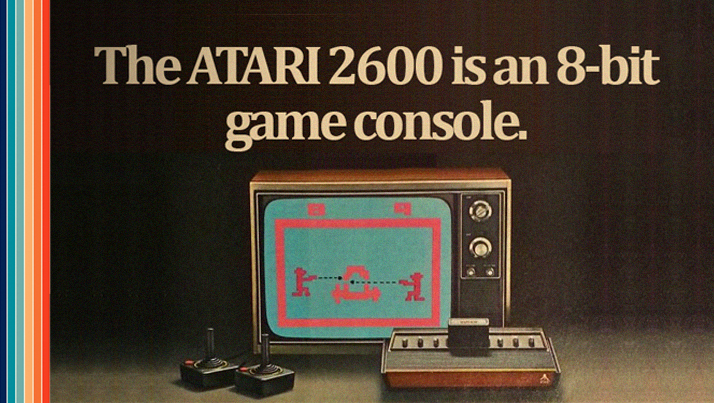
The ATARI 2600 is an 8-bit Game Console
In this episode of Quick Blits we explore a topic that occasionally comes up in conversations. How many ‘bits’ is the Atari 2600? What does that mean, and makes it that way? We’ll cover the Atari 2600, Nintendo NES and SNES, Sega Masters System and Genesis… with a surprise inside!
More...
How the ATARI 2600 Responds to Joysticks and Switches
In this episode we explore how to read input from cx-40 joystick controllers and the console switches
More...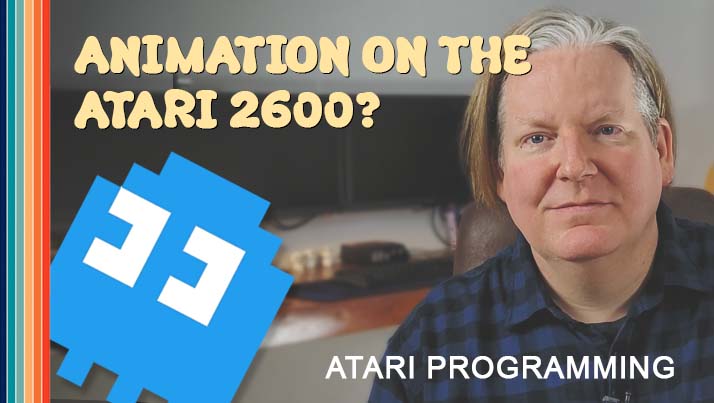
Animating Graphics on the ATARI 2600
In this episode we learn how to creating player graphic animations and using pointers to simplify your code.
More...
Season One Review
It's been an exciting year, and I glad to see so many people interested in the original game console. I share my thoughts about starting the channel, and my goals as we look to the future.
More...
Code Faster With The Atari Dev Studio
In this episode we explore what languages and processes were used when creating games for the Atari VCS when it was first launched, and how today we can use Visual Studio Code and the Atari Dev Studio to code and debug faster than ever before.
More...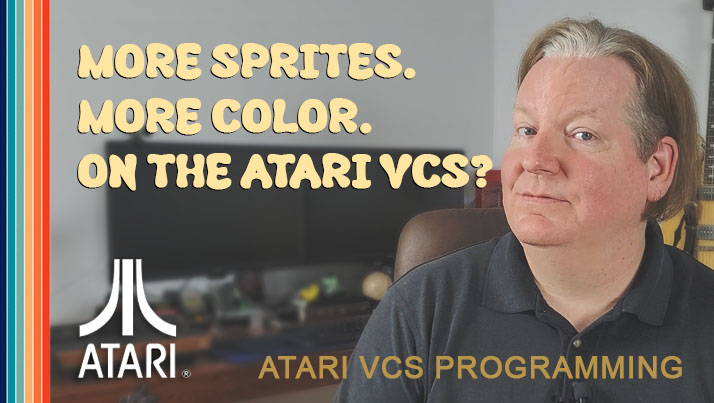
More Sprites & Color on the ATARI VCS
In this episode we explore how to add color to our graphics, the pitfalls of poor timing, spanning multiple scanlines, drawing duplicates of our graphics and spacing them apart. Lots of information is packed in here and plenty of code examples in our github.
More...
Asymmetrical Playfields + 125 Subscribers
In this special 125th subscriber episode we're briefly explore how to draw an asymmetrical playfield on an ATARI 2600, with code example provided in our GITHUB. Thanks everyone for your continued support!
More...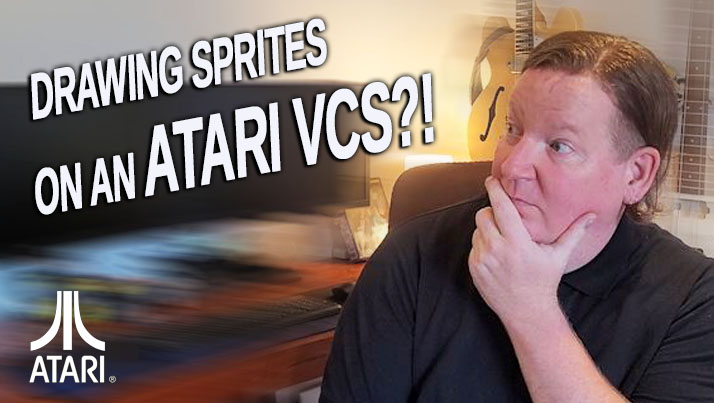
Sprites on the ATARI VCS?!
In this episode we explore how the Atari VCS uses graphics registers to draw what we now call sprites. We'll examine Graphics Player Zero (GRP0), and the Horizontal Motion registers in the TIA to place our graphics anywhere on the screen.
More...
Brief History of Game Cartridges and a Free Cleaning Tool
In this first episode of Quick Blits we talk about the history of electronic game cartridges, starting with the Fairchild Channel F, through the Atari 8-bit line of computers and all the way to today's Nintendo Switch. We present a free cartridge cleaning tool you can download from thingiverse.
More...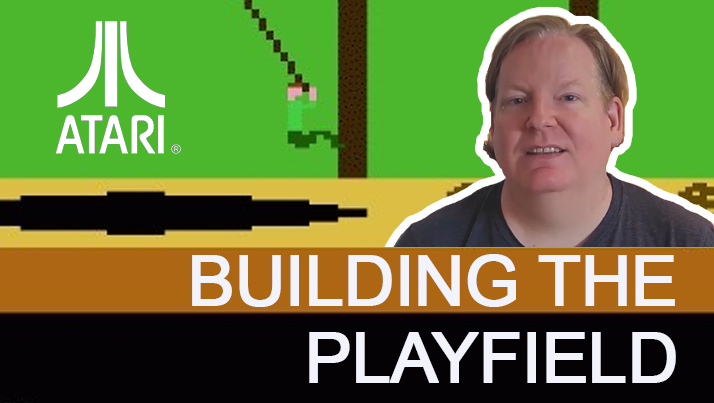
Building Your Playfield on an Atari 2600
In this episode we go deeper into scan lines and their ‘ideal’ numbers, and also the design and programming of the ATARI 2600 playfield to create interesting and appealing games. We also explore how some commercial games designed their own playfields and all the different components involved in the creating rich worlds within a restricted environment.
More...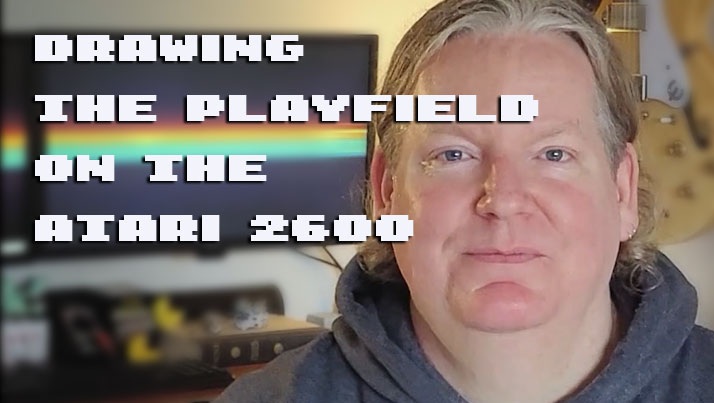
Drawing a Playfield on an Atari 2600
In this episode we talk using the Atari 2600's playfield pixels. We'll discuss the various intricacies of the registers, how we can mirror the playfield, and look at a demo of the playfield register positions on our screen.
More...
Analysing the Atari 2600 Code
In this episode we look at the code from the previous episode, stepping through it line by line. We'll talk about some of the 6507 op-codes and Atari Television Interface Adaptor registers. We'll also touch on the difference between colour palettes for NTSC, PAL, and SECAM CRT's. A small change to the example code highlights the colour capabilities of the TIA.
More...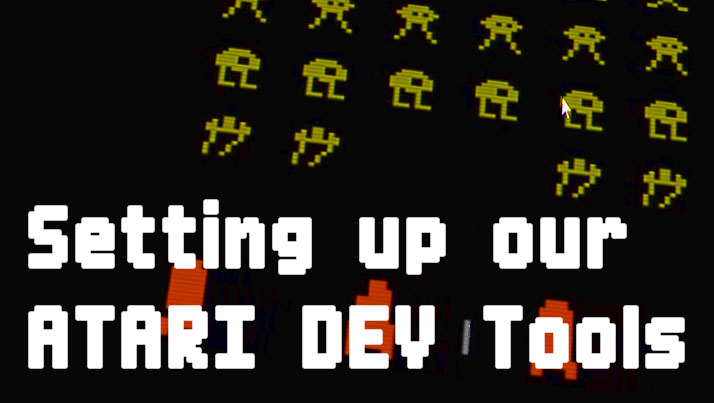
Code. Compile. Play. Setting up our ATARI 2600 Dev Tools
In this episode we look at the basic tools that will make up the development environment for programming and testing a game for the ATARI 2600. We’ll install the Stella emulator, along with the Dasm 8-bit compiler. Afterwards we’ll use a code snippet to compile and test in the emulator.
More...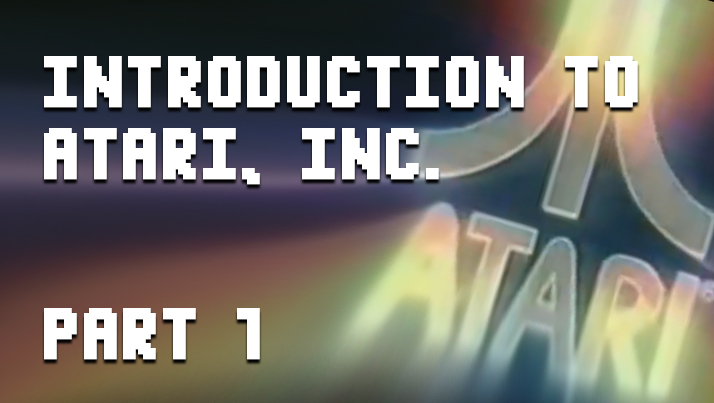
Introduction to ATARI, INC - Part 1
Starting with the ATARI 2600. In this video we learn about about the beginnings of ATARI, the false starts, the people behind it, and the launch of the ATARI VCS.
More...